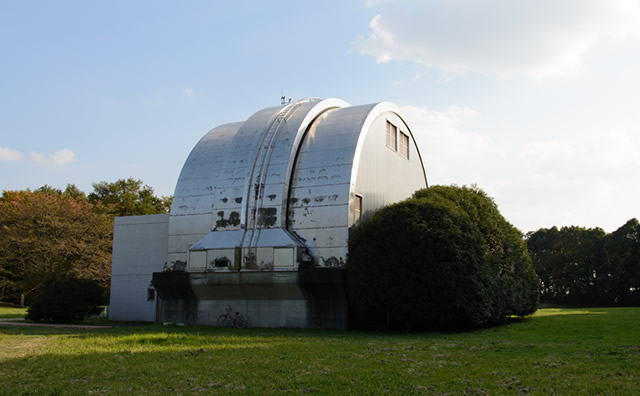Astronomical Instruments Museum
The Photoelectric Meridian Circle

The Photoelectric Meridian Circle (PMC), built in 1982, was used to measure the precise positions of celestial objects. As a meridian circle, PMC is a telescope specifically designed to measure the coordinates of celestial objects. It started operations in 1984. To both the north and the south of the telescope dome, you can find a depression in the ground where a terrestrial reference point, meridian mark, sits.
The dome is currently used as the Astronomical Instrument Museum and showcases various collections.
PMC contributed to our understanding of the Universe by measuring the positions and motions of celestial objects. Conventional measurements using the Gautier Meridian Circle were performed visually, so the results were vulnerable to differences between different observers. However, PMC, equipped with a photoelectric micrometer, allowed unbiased positional measurements.
PMC measurements achieved a five-fold efficiency increase compared with visual observations, and could determine the positions of stars and galaxies up to 12th magnitude with an accuracy of 0.1 arcseconds in each observation. PMC observed the Sun during the daytime and a large number of stars during the nighttime at a rate of 1 star per 3 minutes. These results were later published in a series of star catalogs and contributed to a wide range of astronomy research including the dynamics of galaxy rotation and Solar System objects.
About
| Aperture | 19 cm (7.5 in) |
|---|---|
| Focal Length | 257.6 cm (100 in) |
| Purpose | Precise positional measurements of celestial objects |
| 1982 (Showa Year 57) | Completed |
|---|---|
| 2000 (Heisei Year 12) | Retired from operation |
| 2007 (Heisei Year 19) | PMC opened to the public |
| 2008 (Heisei Year 20) | Opened as the Astronomical Instrument Museum |